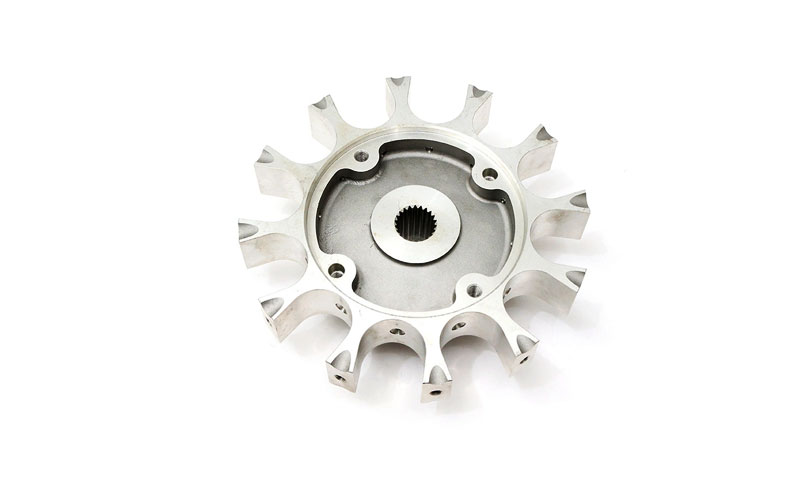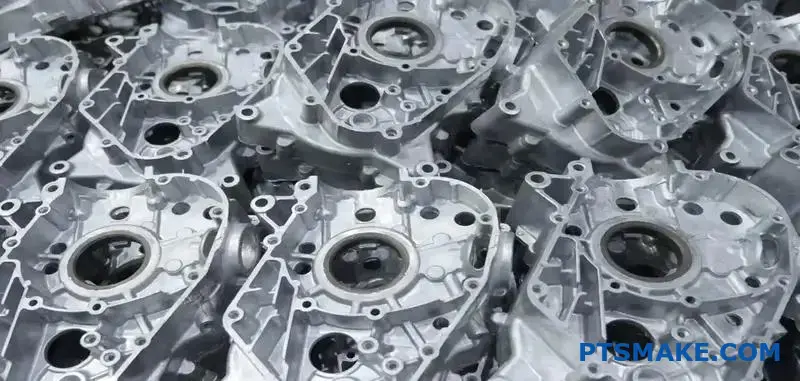Recognizing Aluminum Casting: A Comprehensive Guide to Its Applications and advantages
Aluminum casting is a procedure that transforms molten aluminum into solid kinds with various strategies. This method provides significant advantages, such as light-weight toughness and deterioration resistance. It locates applications in countless markets, showing its flexibility. However, comprehending the complexities of aluminum casting and its ideal practices can greatly influence the high quality of the last item. Exploring these aspects exposes the true capacity of aluminum casting in modern production.
The Essentials of Aluminum Casting
Aluminum casting is a manufacturing process that changes liquified aluminum into strong objects with numerous techniques. This process starts with home heating aluminum until it reaches its melting point, enabling it to move right into molds. There are a number of methods of aluminum casting, including sand casting, die casting, and financial investment casting, each appropriate for different applications based upon design intricacy and production volume.
In sand casting, molds are created making use of sand, providing flexibility for complex forms. Die casting involves forcing molten aluminum right into a steel mold under high pressure, causing exact and repeatable parts. Financial investment casting, on the various other hand, uses a wax pattern that is covered with ceramic to produce in-depth parts.
After the aluminum cools down and strengthens, the molds are eliminated, exposing the completed products. This casting process is essential in different industries, including vehicle, aerospace, and durable goods, allowing the creation of lightweight and sturdy components.
Advantages of Aluminum Casting
Among the vital advantages of aluminum casting lies in its capacity to generate light-weight yet solid elements. This distinct combination makes aluminum an ideal selection for various sectors, including automotive, aerospace, and durable goods. The inherent corrosion resistance of aluminum additionally boosts the sturdiness of the cast parts, prolonging their lifespan and minimizing the demand for upkeep.
Additionally, aluminum casting permits elaborate layouts and complex geometries, which can result in more reliable and aesthetically pleasing items. The product's superb thermal and electrical conductivity further increases its applications, particularly in electronic devices and heat exchangers.
In addition, aluminum recycling is extremely effective, adding to environmental sustainability and lowering manufacturing expenses. On the whole, the advantages of aluminum casting setting it as a functional and functional remedy for makers seeking to enhance efficiency while decreasing weight and resource use.
Common Methods of Aluminum Casting
While numerous strategies exist for aluminum casting, each technique offers unique benefits tailored to details applications. One of the most common approaches include sand casting, die casting, and financial investment casting.
Sand casting, known for its versatility, makes use of sand molds to create intricate shapes and appropriates for both big and little production runs. Die casting, on the other hand, utilizes high-pressure injection of molten aluminum into steel molds, resulting in accurate measurements and smooth surface areas, making it ideal for automation.
Financial investment casting, commonly described as lost-wax casting, includes developing a wax pattern covered with a ceramic shell. Precision aluminum casting. When the wax is dissolved, liquified aluminum is put into the dental caries, generating elaborate designs and superb surface coatings
Each of these techniques plays a crucial duty in the aluminum casting landscape, using details benefits that cater to differing production requirements and manufacturing ranges.
Applications Throughout Industries
The adaptability of aluminum casting approaches permits a vast range of applications throughout various industries. In the automotive industry, light-weight aluminum elements boost gas efficiency and performance, adding to the growing demand for electrical lorries. Aerospace industries utilize aluminum castings for their strength-to-weight ratio, ensuring security and resilience in aircraft production.
The building and construction industry take advantage of aluminum casting with building components and architectural components that stand up to corrosion and call for marginal maintenance. Furthermore, consumer electronic devices manufacturers employ aluminum castings for real estates and frames, stabilizing visual appeals with performance.
In the aquatic market, aluminum castings are favored for watercrafts and marine tools due to their resistance to deep sea corrosion. Additionally, the medical field makes use of aluminum castings in medical tools and equipment, making sure accuracy and reliability. Overall, aluminum casting's adaptability allows it to meet the diverse needs of several industries, making it a crucial manufacturing process.
Finest Practices for Successful Aluminum Casting
Effective aluminum casting depends on a mix of careful prep work, specific execution, and complete quality assurance. Picking premium aluminum alloys is vital, as they straight influence the casting's properties and efficiency. Appropriate mold get more info and mildew design is important, ensuring that it accommodates thermal contraction and minimizes flaws.
During the melting process, preserving the appropriate temperature and preventing contamination are critical to achieving an uniform alloy. Additionally, using reliable putting methods can enhance the filling of molds, decreasing the possibility of air pockets or inclusions.
Post-casting, applying detailed assessment techniques, such as visual evaluations and non-destructive testing, assures that flaws are determined early. Additionally, using strenuous quality assurance measures throughout the procedure assists preserve consistency and integrity in the final items. By sticking to these best techniques, producers can significantly boost the success and effectiveness of their aluminum casting procedures.
Often Asked Inquiries
What Precaution Should Be Taken Throughout Aluminum Casting?

How Can Flaws in Aluminum Castings Be Decreased?
Issues in aluminum castings can be decreased through careful mold and mildew style, proper temperature control, ensuring clean steel, utilizing proper putting strategies, and performing comprehensive evaluations to recognize and resolve concerns prior to wrapping up the casting procedure.

What Is the Ecological Effect of Aluminum Casting?
The environmental impact of aluminum casting consists of energy-intensive processes, greenhouse gas emissions, and resource extraction worries. Developments in recycling and sustainable methods can alleviate these effects, promoting an extra eco-friendly approach to aluminum manufacturing.
Can Aluminum Casting Be Reused?
Yes, aluminum casting can be recycled successfully. The reusing procedure requires significantly less power compared to primary aluminum manufacturing, making it an eco-friendly alternative that adds to resource conservation and decreased carbon discharges.
What Are the Costs Connected With Aluminum Casting Processes?
Prices connected with aluminum casting procedures include product expenditures, labor, equipment upkeep, power usage, and mold fabrication. These factors can differ significantly based upon production scale, intricacy of designs, and details manufacturing techniques used.
Aluminum casting is a process that transforms molten aluminum right into strong kinds via various techniques. Aluminum casting is a production process that changes liquified aluminum into solid things through different methods. While numerous strategies exist for aluminum casting, each technique offers unique benefits customized to specific applications. The environmental effect of aluminum casting consists of energy-intensive procedures, greenhouse gas emissions, and source removal issues. Expenses connected with aluminum casting procedures consist of material expenditures, labor, devices upkeep, energy intake, and mold and mildew manufacture.